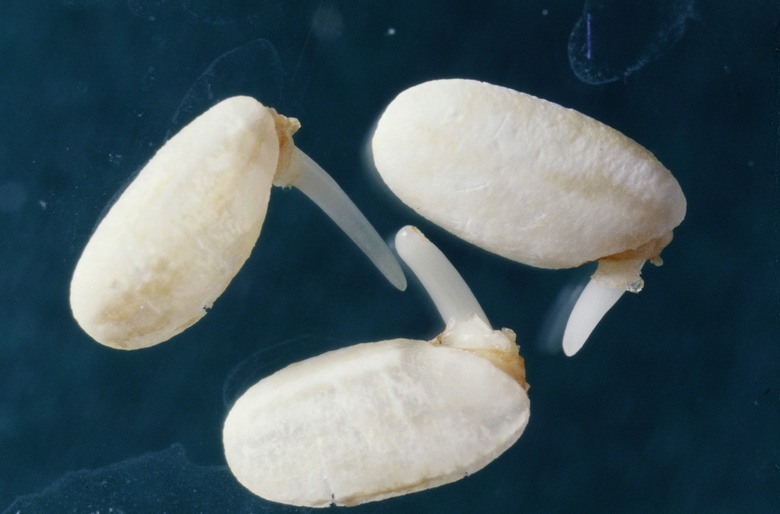Natural Sources Of Gibberellic Acid Extraction
Gibberellic acid is a hormone present in plants that is responsible for regulating the growth of a plant. It is directly responsible for cell division and is used in horticulture to promote seed germination. Gibberellic acid is present at a high concentration in the fungus Gibberella fujikuroi, which is the major commercial source for gibberellic acid.
Gibberella Fujikuroi
Gibberella Fujikuroi
Gibberellins are naturally found in plants and some species of fungus and bacteria. This hormone is present in all flowering plants and many non-flowering plants, such as ferns. The fungus Gibberella fujikuroi, which was first found to alter the growth of Japanese rice plants, is the largest natural source of commercial gibberellic acid extraction. This fungus is cultivated on a large scale in industrial-sized vats, and then extracted through a refinement process causing their stems to become spindly.
Gibberella Moniliformis
Gibberella Moniliformis
Another natural source of gibberellins that is cultivated commercially for extraction is Gibberella moniliformis, which affects corn plants. Gibberellic acid is extracted from the fungus using a method that involves heating the fungus to 212 degrees Fahrenheit. The batch of fungus is then cooled, and the resulting crystaline residue is collected and packaged for sale for a variety of applications such as inducing germination in seeds or causing seedlessness in some varieties of edible fruit.
Cereal Grain Sources
Cereal Grain Sources
Botanists have isolated 79 different gibberellic acid compounds that occur naturally in plants. One significant plant source for gibberellic acid is the rice plant. The anthers of a rice plant, which are the male reproductive organs of a plant, produce up to 3.4 micrograms of gibberellic acid. Other sources of gibberellic acid found in cereal grains are the pollen and seed of the corn plant, along with wheat seedlings, full-grown wheat plants, and the barley plant.
Other Plant Sources
Other Plant Sources
Gibberellic acid is found at a high concentration in the developing seed of a peach. Other plant sources include onion bulbs, spinach and ferns. Overall, 136 different naturally occurring gibberellic acid compounds have been isolated in plants, fungi and bacteria. Many plants contain multiple forms of the gibberellic acid hormone, which is used to regulate different aspects of the plant's growth. Giberellic acid-3 is the most widely used form of gibberellic acid.
References
Cite This Article
MLA
Martin, Victoria. "Natural Sources Of Gibberellic Acid Extraction" sciencing.com, https://www.sciencing.com/natural-sources-of-gibberellic-acid-extraction-13427131/. 21 July 2017.
APA
Martin, Victoria. (2017, July 21). Natural Sources Of Gibberellic Acid Extraction. sciencing.com. Retrieved from https://www.sciencing.com/natural-sources-of-gibberellic-acid-extraction-13427131/
Chicago
Martin, Victoria. Natural Sources Of Gibberellic Acid Extraction last modified March 24, 2022. https://www.sciencing.com/natural-sources-of-gibberellic-acid-extraction-13427131/
